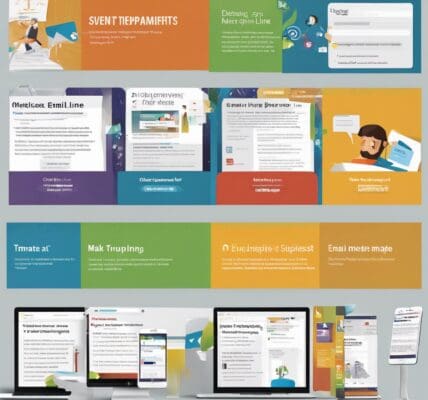In the fast-paced world of digital marketing, programmatic advertising has emerged as an essential tool for B2B marketers seeking to connect with their target audiences efficiently. By leveraging automated software, businesses can run targeted campaigns across various online platforms, including apps and websites. While the mechanics of these campaigns often seem straightforward, successfully attracting B2B buyers requires a deeper understanding of your audience and refined strategies. Here are four actionable tips to enhance your programmatic ad efforts and turn leads into conversions.
1. Develop Detailed Buyer Personas
A critical step in refining your programmatic advertising strategy is the creation of comprehensive buyer personas. These profiles encapsulate the characteristics, challenges, and aspirations of your target audience, derived from extensive market research. B2B buyer personas should include crucial details, such as job titles, industry challenges, purchasing motivations, and preferred communication channels. The insights gained from these personas not only inform your advertising messages but also streamline lead nurturing efforts.
For instance, consider a software company targeting IT managers in healthcare organizations. A detailed persona might reveal that these decision-makers prioritize data security and compliance. This knowledge allows you to tailor your ads to address these specific concerns, making your campaigns more relevant and appealing.
2. Set Clear Campaign Objectives
Each B2B marketing campaign serves a distinct purpose, whether it’s lead generation, traffic enhancement, or brand awareness. Establishing clear, single objectives for each programmatic ad campaign is vital. This focused approach prevents message dilution and aligns your team’s efforts across various channels. For example, if your primary goal is to increase brand awareness, design your ads to enhance visibility and engagement rather than pushing for immediate conversions.
Moreover, clearly defined objectives enable easier tracking of key performance indicators (KPIs). By analyzing data at the end of each campaign, firms can extract valuable insights to inform future strategies. For instance, understanding the click-through rates or conversion rates of different ads helps in refining future messaging and targeting.
3. Refresh Content Regularly
The digital landscape is not static, and neither is the audience’s appetite for content. Even the most compelling ad will lose its impact over time if it is not updated. To maintain engagement, it’s crucial to run multiple versions of your promotional messages throughout the lifespan of a B2B programmatic ad campaign.
Experimenting with diverse content formats and tones serves as an effective means of capturing attention. This approach can also be integrated into A/B testing, allowing marketers to discern which messages resonate best with their audience. For instance, one version of an ad might highlight the product’s efficiency, while another emphasizes cost savings. Tracking the performance of each variant can lead to a clearer understanding of what drives engagement and conversions among your audience.
As leads inch closer to conversion, personalizing your messages becomes increasingly important. Employing innovative tools, such as AI-driven email assistants, can streamline the process of crafting these tailored communications. Personalization helps foster relationships with potential customers, increasing the likelihood of conversion.
4. Focus on High-Value Personas Through Retargeting
In the B2B landscape, understanding the concept of high-value personas is essential. These profiles represent individuals who can significantly impact your business, typically holding influential positions within their organizations, such as senior managers or C-suite executives. Retargeting these key figures involves continuously delivering tailored messages across the web.
This repeated exposure is critical, as B2B buyers often take considerable time to validate their options. Utilizing data from interactions—such as webinar attendance or content downloads—can enhance your retargeting efforts. However, it’s vital to prioritize high-value personas, as they offer a greater return on investment (ROI).
Additionally, staying compliant with regulations like GDPR and CCPA is crucial when requesting cookie consent for retargeting campaigns. These laws help maintain user trust while nurturing potential leads.
Conclusion
Programmatic advertising presents immense opportunities for B2B marketing teams to connect with their target audiences effectively. By developing detailed buyer personas, setting clear campaign objectives, refreshing content regularly, and focusing on high-value personas through strategic retargeting, businesses can enhance their marketing efforts significantly. Understanding the intricacies of your audience’s behaviors and preferences not only maximizes engagement but ultimately drives conversions, making programmatic ads a formidable asset in the B2B marketing toolkit.












